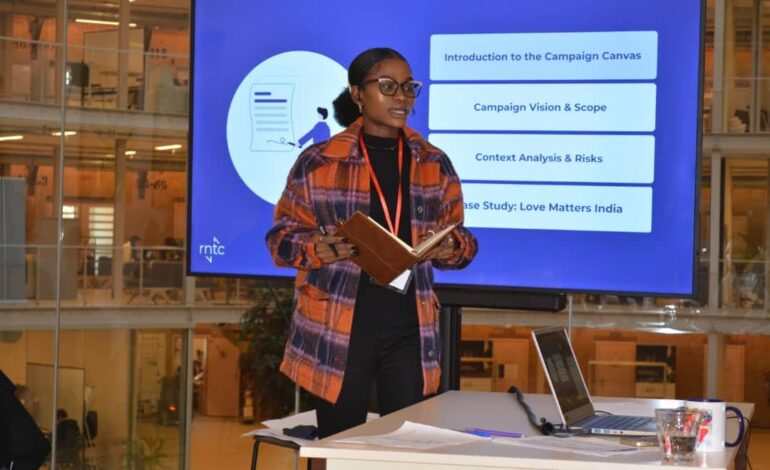#MyRNTCExperience
The honor of moderating a session on the focus topic of “Media Campaigns for Social Change and Advocacy” occurred at…

The honor of moderating a session on the focus topic of “Media Campaigns for Social Change and Advocacy” occurred at the April edition of CJID’s monthly staff capacity building session.
In order to provide some context, I should mention that my colleague Felicia Dairo and I were each awarded a scholarship through the Nuffic Orange Knowledge scholarship program for the RNTC’s In-Person course, “Media Campaigns for Social Change and Advocacy.”
Our time at the #RNTC was nothing short of extraordinary. Our time spent studying in the Netherlands was amazing because we got to interact with like-minded social change activists from all around the world, try new delicacies, and make memories.

was an amazing experience.”
The seminar dissected the many components that go into making successful campaigns, from identifying our target audience to formulating our target question and developing our persuasive objectives. Additionally, the training included a number of hands-on exercises that improved learning.
After the three weeks of instruction, we wanted to share what we had learned with our coworkers because we had gained so much knowledge from the broad team of trainers and other resource people.
The training’s goals were to teach participants the value of clearly defining their target audience, how to deliver information and messages to the appropriate group of people, and how to use a variety of tools and methodologies to identify and map their target audience’s needs, experiences, behaviors, and goals.
Target audience mapping and how to customize campaign content to speak particularly to the intended demographic were some of the topics covered in the event.
It broke down the target audience mapping process into its component parts, which include defining the target question, finding the influencers, spotting the accepted truths, and recognizing the emotional payoffs.
We established that persuasion is learning through emotion and that it is also necessary to convince in order to modify behavior if we want to increase abilities or attitudes. We can build more persuasive campaigns by using persuasion to better understand the logic, influencers, and narratives of our audience.
We also discussed the three steps of persuasion, which involve choosing a reliable source and determining who your audience should trust. Developing a reasonable plan; what are their existing convictions? A behavior is a combination of a belief and an emotional reward.

We continued by briefly discussing the key components of storytelling, including the (im)perfect universe, the central question, the stages of growing tension, the climax, the resolution, symbols, and the universal truth. Without discussing the monitoring and evaluation component, which is a crucial component of measuring the performance of our campaigns utilizing internet analytics and social media data, the step-down training session would not have been complete.
While we are incredibly grateful to the CJID for giving us the chance and the platform to give our presentations, we are also enthusiastic that the little we did offer will have a significant influence on the work the CJID does. Once more, I’d like to express my gratitude to NUFFIC for allowing us to participate in the sharing of #MyRNTCExperience.
Felicia and I will launch a collaborative advocacy campaign on child sexual abuse targeting children in primary schools in the coming days/weeks after having completed this as the first step to putting our campaigns into action.





Comments